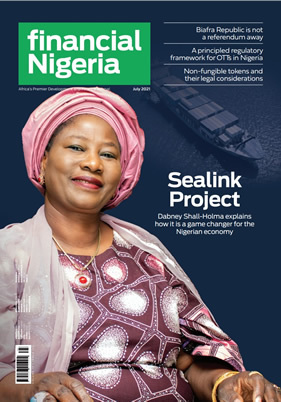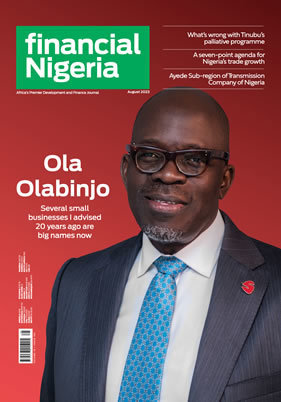When creating a new market, simply doing what you’re good at is rarely enough

Feature Highlight
Rather than zeroing in on its core competencies – like baking fresh bread – Grupo Bimbo’s strategy took it in the opposite direction.
For decades, the concept of core competencies has been a dominant idea in business, helping organizations determine where to direct their time and effort. The thinking goes something like this: organizations need to identify the unique skills and resources that differentiate them from their competitors, and then focus on doing activities that harness those competencies. In theory, this frame-work helps organizations grow and stay competitive, while avoiding the pitfall of spreading themselves thin by engaging in non-essential activities.
Leveraging core competencies can be an excellent strategy for organizations operating in mature markets because it helps them decide which activities to do in-house, and which to outsource to other firms. For example, a computer company may focus the majority of its resources on core competencies like product design and marketing, while outsourcing manufacturing, distribution, and customer service activities to other companies who specialize in doing them.
However, when it comes to launching market-creating innovations – which target new populations of overlooked consumers for whom solutions have traditionally been inaccessible – organizations often need to do the opposite. In our recent research into successful and promising market-creating organizations, 84 of the 100 studied needed to integrate activities into their business that conventional companies in their industry didn’t see as core to their business.
It’s a surprising divergence from what many business experts consider to be best practice. But the reason for it is simple: for innovators creating new markets, it isn’t just about what your organization is good at doing; it’s about what needs to be done.
Because market-creating organizations, as the name suggests, are creating new markets, the firms to which these organizations might otherwise outsource operations often don’t exist or are unreliable. Therefore, in order to reliably deliver their product, market-creating organizations usually need to develop many of these typically “outsourceable” operations in-house.
Consider Grupo Bimbo. When the baking company got its start in Mexico City in 1945, Mexico was a very poor country, and fresh bread was a luxury for many. The company set its sights on creating a new market by selling bread that was both fresh and affordable enough for average Mexican families to buy.
Rather than zeroing in on its core competencies – like baking fresh bread – Grupo Bimbo’s strategy took it in the opposite direction. When its leaders grew frustrated with the inconsistent quality of the flour supplied from other companies, they decided to develop their own flower mills. As time went on and Grupo Bimbo recognized other areas where reliable partners were hard to find, it integrated more activities into its operations that were not core competencies, such as agriculture, financial services, distribution and logistics, packaging, and more. It even developed its own two-year educational program to supplement its employees’ education and train managers.
Similarly, in the 1980s and 1990s, Aravind Eye Hospitals, a network of affordable, high-quality eye clinics in India, found that two critical inputs of its business, intraocular lenses needed for surgery and well-trained technicians, were difficult to reliably and affordably obtain. In order to deliver its service, the organization was forced to look beyond its core competency of performing eye surgeries and began manufacturing its own lenses and training its own technicians. These moves have allowed Aravind to perform 400,000 low-cost or free eye surgeries annually, and ultimately enabled it to sustain the new market it created for eye surgery in India.
While it can be a helpful framework in mature markets, thinking in terms of core competencies is a luxury not afforded to most market-creating organizations. Trying to serve consumers for whom good solutions didn’t previously exist often leads organizations into territories where reliable partners can be hard to find. In these situations, they need to consider all the activities that need to be done in order to reliably deliver their product or service to their customers, then identify where the market’s capabilities to manage those activities are unreliable or missing altogether. These activities ultimately become the organization’s new core competencies, whether or not they were before.
When it comes to market creation, it’s not about what your organization does well to start with, but what it needs to do well in order for the new market as a whole to succeed.
Lincoln Wilcox is a research associate at the Christensen Institute, where he researches ways in which individuals, businesses, governments, and nonprofits can leverage innovation to create prosperity in low-income countries and communities. Efosa Ojomo is a senior research fellow at the Christensen Institute, and co-author of The Prosperity Paradox: How Innovation Can Lift Nations Out of Poverty. Efosa researches, writes, and speaks about ways in which innovation can transform organizations and create inclusive prosperity for many in emerging markets.
Other Features
-
-
What I learned after studying 80 innovation programmes in Africa
My team and I are in the process of designing an innovation and entrepreneurship programme which we hope accelerates ...
-
Nigerian power sector: resolving liquidity concerns
Given financial pressures on the power generation companies and distribution companies, upward tariff revisions ...
-
India has arrived
A founder of the Non-Aligned Movement, India has plenty of experience navigating precarious ...
-
The new CBN foreign exchange code and its implications
With the introduction of the CBN FX code, Nigeria has aligned with leading financial jurisdictions, such as the ...
-
FIRS: Tax revenue as Nigeria’s new ‘crude oil’
President Tinubu deserves to be hailed for the huge jump in the shareable FAAC allocations which has continued an ...
-
DeepSeek and the future of finance
The DeepSeek disruption is a clear signal that the AI landscape in financial services is about to undergo a seismic ...
-
How to sell USDT for cash in Nigeria: A comprehensive guide
Selling USDT for cash in Nigeria doesn’t have to be complicated.
-
A review of the national tax bills
The four tax bills signify a pivotal shift in Nigeria’s tax framework, focusing on critical areas of revenue ...
Most Popular News
- Artificial intelligence can help to reduce youth unemployment in Africa – ...
- Tariffs stir inflation fears in US but offer targeted industry gains ...
- Nigeria records $6.83 billion balance of payments surplus in 2024
- Tinubu appoints new Board Chair, Group CEO for NNPC Limited
- CBN net reserve hits $23.1 billion, the highest in three years
- Soaring civil unrest worries companies and insurers, says Allianz















